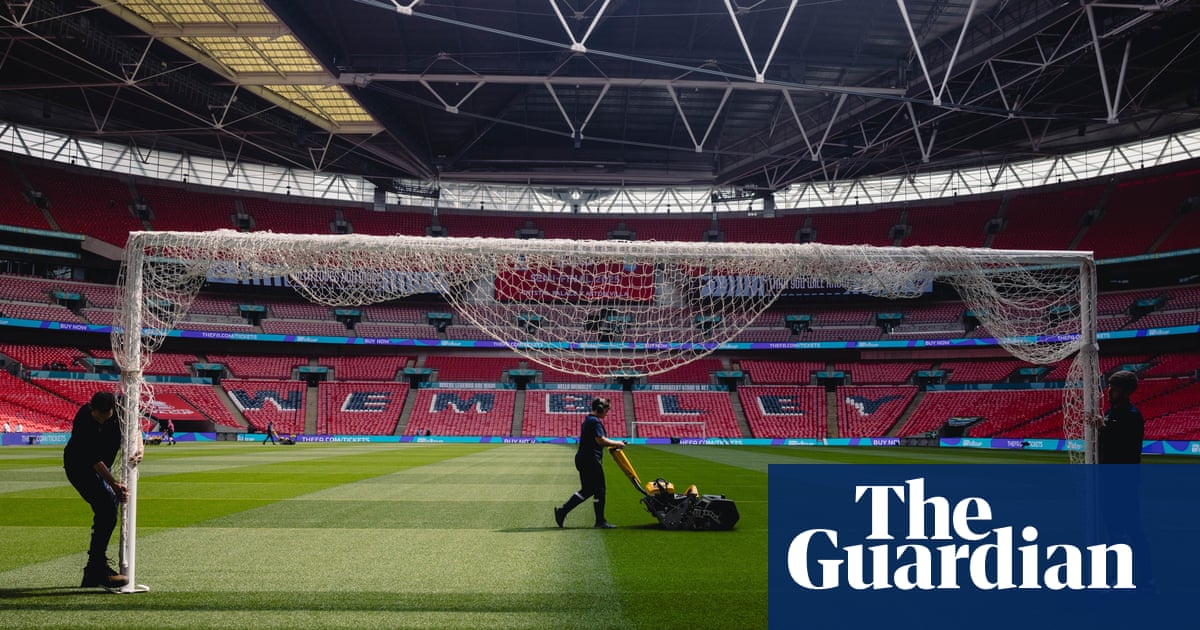The article provides a detailed account of the organization and atmosphere surrounding the FA Cup semi-final weekend held at Wembley Stadium. It highlights the extensive logistical efforts involved in hosting such major sporting events, underscoring the scale of operations that include thousands of staff and meticulous attention to details like the pitch maintenance and hospitality services.
Event Organization and Scale
The sheer number of personnel involved, exceeding 12,000, indicates the importance placed on delivering a successful event. The meticulous care given to the pitch, with the grass being cut multiple times and painted for visibility, reflects a commitment to maintaining high standards in sports presentation. This could be seen as an effort to enhance the overall experience for attendees, showcasing the event's significance in the sporting calendar.
Audience Engagement and Atmosphere
The article mentions the consumption of large quantities of food and drink, which not only illustrates the vibrant atmosphere but also serves to emphasize the social aspect of attending such events. This information could be aimed at portraying Wembley as a prime venue for not just sports but also a place for social gatherings, encouraging future attendance.
Performance and Legacy of Teams
Highlighting Manchester City's victory and their upcoming appearance in the FA Cup final creates a narrative around the team's dominance in the tournament. This could be a subtle way to foster support and excitement among fans, reinforcing the club's status in football.
Media Representation and Public Perception
By emphasizing the logistical achievements and the celebratory atmosphere, the article may be shaping a positive public perception of both the event and the venue. This could serve to enhance Wembley Stadium's image as a premier location for significant sporting events, aiming to attract future events and audiences.
Potential Concealment of Issues
While the article paints a picture of success and excitement, it may be overlooking underlying issues such as the pressures faced by staff, potential economic implications for local businesses, or the environmental impact of hosting such large-scale events. The focus on positive aspects might serve to divert attention from these potential criticisms.
Reliability of Information
The information presented in the article appears factual, with specific numbers and details that lend credibility. However, it is important to consider that the emphasis on positive aspects may skew the overall narrative, suggesting a degree of manipulation in framing the story.
The overall message seems to celebrate the successful execution of a major sporting event, promoting a sense of community and excitement around football, while also reinforcing the prestige of Wembley Stadium. The article may resonate particularly well with football fans, local businesses benefiting from the influx of visitors, and sports enthusiasts who value the organizational efforts behind such events.
In terms of market impact, this article could influence investments in sports-related businesses or hospitality sectors, as it underscores the economic activity generated by large-scale events. Companies in these sectors may see potential growth due to the positive portrayal of event attendance and engagement.
The article does not appear to have direct implications for global power dynamics or current geopolitical issues; however, it does reflect ongoing themes in sports culture and community engagement amidst broader societal trends.
As for artificial intelligence involvement, there is no clear indication that AI was used in crafting the narrative. However, models might have been employed in data analysis for the operational aspects mentioned, such as attendance figures and logistics planning.
The article's language is largely neutral and descriptive, aiming to inform rather than manipulate, although the selective emphasis on positive outcomes can lead to a perception of bias.
In conclusion, while the article is generally reliable regarding factual details, it presents a curated view that may omit critical nuances of the event's broader implications.
